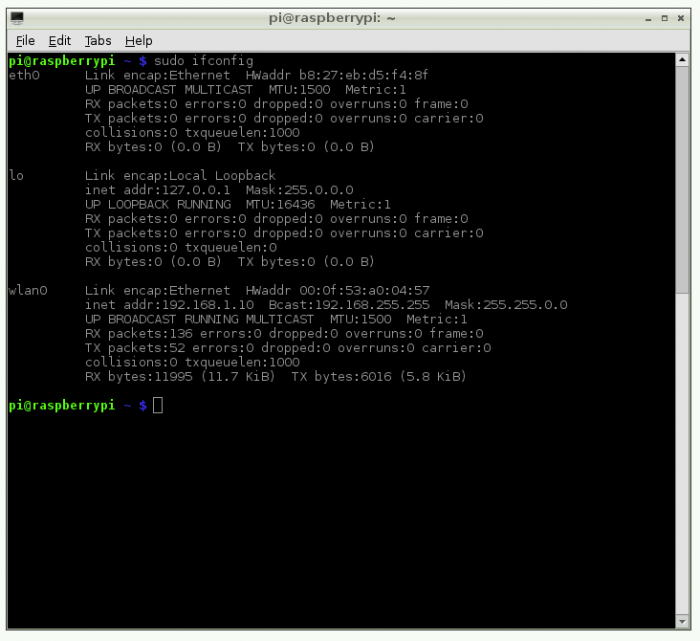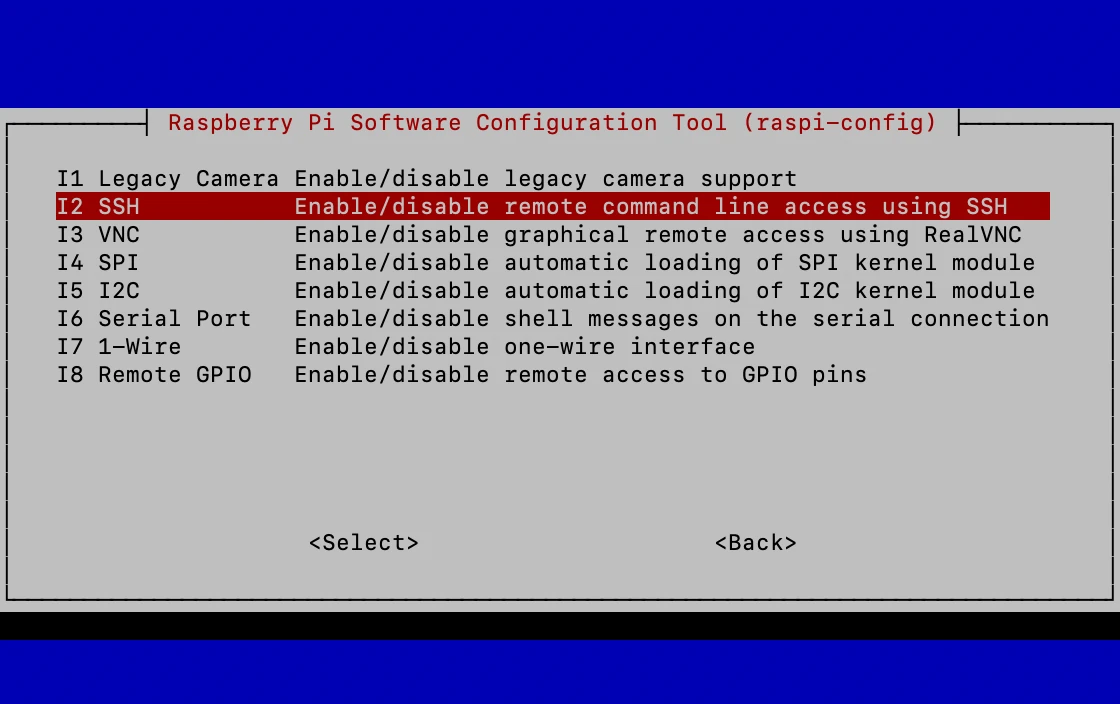Access Your Raspberry Pi Remotely: A Complete Guide
Is remotely accessing your Raspberry Pi a luxury or a necessity in today's connected world? The answer, increasingly, is the latter. Remote access is no longer merely a convenience; it's a crucial skill for anyone navigating the ever-expanding landscape of technology, from managing IoT devices to pursuing remote work opportunities. This guide serves as your comprehensive roadmap, unveiling the step-by-step methods to securely connect to your Raspberry Pi from anywhere on the globe.
As the Internet of Things (IoT) and remote work paradigms continue to reshape our lives, the ability to remotely access a Raspberry Pi has evolved from a niche skill into a fundamental requirement. This remarkable mini-computer offers a universe of possibilities, but its full potential can only be unleashed by mastering remote management. This article delves into the indispensable tools, techniques, and best practices needed to establish a secure remote connection.
Whether you're a novice eager to learn or an experienced user looking to refine your skills, this tutorial provides the knowledge to create a dependable remote connection. We'll cover everything from configuring SSH to harnessing advanced tools like VNC and exploring third-party services. Let's embark on this journey to maximize your Raspberry Pi's potential remotely.
- Is James Bolam Still Alive Fact Vs Fiction His Life
- Is Sydney Sweeney In The Handmaids Tale Casting Rumors Explored
| Topic | Details |
|---|---|
| Introduction to Raspberry Pi | The Raspberry Pi is a compact, affordable, and versatile single-board computer, perfect for tech enthusiasts, hobbyists, and professionals. It's designed for various applications, including home automation, robotics, and IoT projects. A key feature is its remote accessibility. |
| Why Remote Access is Important | Remote access allows you to manage your device without physical presence, crucial for projects in remote areas. It also enables quick troubleshooting and collaboration among team members. |
| Methods of Remote Access |
|
| Setting Up SSH | Requires enabling SSH in Raspberry Pi configuration, finding the IP address (using "hostname -I" in the terminal), and using an SSH client (PuTTY, Terminal) to connect. |
| Using VNC for Remote Access | Involves installing a VNC server on the Raspberry Pi, enabling VNC in the configuration, and using a VNC client (RealVNC Viewer) on your computer to connect. |
| Securing Your Remote Connection | Essential to use strong passwords, enable two-factor authentication, configure a firewall, consider a dynamic DNS service, and keep software and firmware updated. |
| Troubleshooting Common Issues | Includes verifying the IP address, checking firewall settings, ensuring SSH or VNC is enabled, and restarting the Raspberry Pi. |
| Advanced Remote Access Options | Third-party services like TeamViewer, NoMachine, and ngrok provide advanced features like file sharing, screen recording, and remote printing (may require paid subscriptions). |
| Remote Access Best Practices | Focus on using strong passwords, two-factor authentication, keeping software updated, using dynamic DNS, monitoring for unauthorized access, and regular data backups. |
The Raspberry Pi's emergence has coincided with the exponential growth of the Internet of Things, and its inherent capabilities perfectly align with the demands of remote management. The combination of a small footprint, low power consumption, and the flexibility of its software make the Raspberry Pi an ideal platform for a vast range of projects. The ability to remotely access and control these projects unlocks a level of convenience and efficiency previously unavailable to many. This article emphasizes that remote access is not merely a feature; it's a central pillar of modern Raspberry Pi utilization, opening doors to a world of possibilities.
The core value of remote access lies in its ability to transcend geographical limitations. Whether a project is located in a remote area with limited physical access, or managed by a team distributed across the globe, the ability to connect remotely becomes essential. This negates the need for physical presence, drastically reducing logistical hurdles and enabling efficient project management. Remote access, in essence, bridges the distance and allows for immediate intervention and management of crucial components without delay.
Another significant advantage of remote access is its impact on troubleshooting and problem resolution. The ability to diagnose and fix issues without being on-site can minimize downtime and save substantial amounts of time and resources. When a system falters, swift and effective troubleshooting can prevent minor problems from escalating into major setbacks. This responsive control, empowered by remote access, ensures the continuous operation of critical projects and minimizes any disruption.
The power of remote access extends beyond the technical aspects; it also streamlines collaboration. Enabling multiple team members to access and manage a Raspberry Pi simultaneously empowers effective teamwork, enhances productivity, and fosters a collaborative work environment. No longer restricted to a single location, team members can contribute from anywhere, creating a shared experience that leverages the collective knowledge and expertise of all contributors. It allows for a seamless workflow.
The first method is SSH, an industry standard for secure remote access. SSH allows direct access to the command-line interface, enabling you to execute commands, manage files, and install software remotely. SSH is lightweight, fast, and highly secure. It utilizes encryption to ensure that all communications between your device and your remote computer remain protected from interception.
To set up SSH, the initial step involves enabling the SSH server on your Raspberry Pi. This is typically done through the Raspberry Pi configuration tool, which provides an easy-to-navigate interface for system settings. Once SSH is enabled, the next critical step is determining your Raspberry Pi's IP address. This address is the digital gateway that connects you to your device. You can find the IP address by typing the command "hostname -I" into your Raspberry Pi's terminal.
Once your IP address is known, you can establish a connection using an SSH client. Popular SSH clients include PuTTY (for Windows) and the built-in Terminal (for macOS and Linux). By using the IP address and your Raspberry Pi's username and password, you can securely log in to your device remotely. This initiates a secure channel, allowing you to send commands and receive data in a secure and authenticated manner.
VNC is a method to mirror the Raspberry Pi's desktop, allowing for full graphical interaction. VNC provides a visual experience, emulating the way you would interact with your device if you were physically present. This method is useful for tasks such as web browsing or using graphical applications, where visual confirmation is crucial.
The setup for VNC is similar to SSH, but it involves installing a VNC server on the Raspberry Pi and a corresponding VNC client on your computer. The RealVNC server, often pre-installed in recent Raspberry Pi OS versions, offers a straightforward approach to setting up VNC. You will then use the Raspberry Pi Configuration tool to enable VNC, usually found under the "Interfacing Options" menu. This will install the RealVNC server and configure it for operation.
On your computer, you will need to install a VNC client. RealVNC Viewer is a commonly used option, available for various operating systems. After installing the viewer, you will enter your Raspberry Pi's IP address in the address field of the VNC viewer, allowing the client to locate your Raspberry Pi. Upon entering your username and password, you will gain complete graphical access to your Raspberry Pi's desktop environment.
Security must be a primary focus. Securing your remote connection involves using strong passwords and, most importantly, enabling two-factor authentication. The implementation of two-factor authentication requires the user to provide two forms of identification. This can include a password and a one-time security code, minimizing the chances of unauthorized access.
Another key step in fortifying your connection involves configuring a firewall. A firewall is a security system that monitors and controls network traffic. By configuring it to restrict unauthorized access, you enhance the security of your Raspberry Pi. Additionally, the use of a dynamic DNS service is highly recommended. This service assigns a domain name to your Raspberry Pi's ever-changing IP address, enabling easy connectivity from anywhere in the world.
Regularly updating the software and firmware on your Raspberry Pi is paramount to maintaining security. These updates contain patches for known vulnerabilities, reinforcing your system against potential attacks. By consistently incorporating these strategies, you fortify your remote connection, ensuring a secure and reliable access experience.
If your Raspberry Pi is unreachable, the first step is to ensure the IP address is correct. This involves verifying the address by typing "hostname -I" in the terminal. Next, you must check your firewall settings. Firewalls are designed to protect your device, so ensure that SSH or VNC traffic is allowed. This step involves checking the configuration of your router or network security software.
Additionally, confirm that SSH or VNC is enabled on your Raspberry Pi. Check the Raspberry Pi configuration settings under the "Interfacing Options" menu. If the settings are correct and you still cannot connect, consider restarting your Raspberry Pi and trying again. Rebooting can resolve various temporary glitches. Remember to check the network connectivity. Ensure the Raspberry Pi has a stable internet connection.
For advanced remote access needs, third-party services offer enhanced functionality. TeamViewer, NoMachine, and ngrok are popular options that provide features such as file sharing, screen recording, and remote printing. These services are well-suited for more complex projects, offering added convenience and functionality. Consider the specific needs of your project and budget when choosing a service.
While these services may involve a paid subscription for advanced features, they provide a convenient, user-friendly way to access your Raspberry Pi from any location. Before choosing a service, evaluate the requirements of your project and compare the offered features to make the best decision. The integration of these advanced options enhances usability, making remote access a robust and beneficial tool for all users.
Best practices are paramount. Implementing robust security protocols is crucial. Use strong, unique passwords, and enabling two-factor authentication is highly advised. Keeping software and firmware up-to-date is also critical, patching potential vulnerabilities and safeguarding your device.
Additionally, consider using a dynamic DNS service. This service makes it simpler to connect from anywhere in the world without the burden of remembering your IP address. This service streamlines access. Regular monitoring for unauthorized access is also essential. A proactive approach involves regular reviews to ensure security. Backing up data regularly is an essential practice, safeguarding against data loss.


Detail Author:
- Name : Prof. Gerhard Romaguera
- Username : myrtle.stiedemann
- Email : broderick.langosh@borer.com
- Birthdate : 1993-09-29
- Address : 260 Lueilwitz Burgs Suite 999 Jaleelton, MS 55517
- Phone : 915.264.7620
- Company : Wintheiser PLC
- Job : Tractor Operator
- Bio : Delectus ex nesciunt voluptatibus temporibus eius. Omnis et atque enim sit. Sequi soluta eum sunt iure voluptatem exercitationem rem. Provident laboriosam sed ea praesentium neque.
Socials
twitter:
- url : https://twitter.com/turner1999
- username : turner1999
- bio : Et quis voluptatibus molestiae. Minima nesciunt ratione totam quaerat. Enim qui quas vel enim.
- followers : 4310
- following : 222
instagram:
- url : https://instagram.com/audraturner
- username : audraturner
- bio : Aperiam repellendus dolorem sit perferendis. Et inventore omnis amet quis dolore.
- followers : 3430
- following : 505